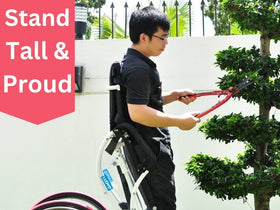
How Does An Electric Bike Work Exactly? Find Out Here!
An electric bike, also known as an e-bike, works by combining a traditional bicycle with an electric motor to provide additional power and assistance to the rider. The motor is typically located in one of three places: the front hub, the rear hub, or the bottom bracket (mid-drive motor).

Here's a general overview of how an electric bike works:
- Battery: The e-bike is powered by a rechargeable battery pack, usually mounted on the frame. The battery provides electrical energy to the motor.
- Motor: The electric motor assists the rider by providing additional power to propel the bike forward. When activated, it engages and aids the rider's pedaling efforts. The motor can be controlled in various ways, such as through a handlebar-mounted control panel or a pedal-assist system.
- Controller: The controller is the brain of the electric bike. It regulates the flow of electrical energy from the battery to the motor. It receives input from the rider or the sensors and adjusts the assistance level or speed accordingly.
- Sensors: Electric bikes often incorporate sensors to detect the rider's pedaling cadence, torque, or speed. These sensors provide information to the controller, allowing it to determine the amount of assistance required and adjust the motor's output accordingly. Common sensor types include cadence sensors, torque sensors, and speed sensors.
- Display & Controls: Many e-bikes have a display panel mounted on the handlebars, showing information such as speed, battery level, and assistance level. The rider can usually adjust the level of assistance or other settings using the control panel.
- Power Assistance Modes: Electric bikes typically offer multiple power assistance modes, which determine the level of motor assistance provided. These modes can range from no assistance (purely pedal-powered) to low, medium, and high assistance levels, depending on the rider's preference or the terrain.
HOW IT WORKS:
- When the rider starts pedaling, the sensors detect the movement and send a signal to the controller.
- The controller, in turn, activates the motor and determines the appropriate level of assistance based on the selected power mode and sensor input.
- The motor then provides additional power to augment the rider's pedaling efforts, making it easier to overcome hills or travel at higher speeds.
It's important to note that specific electric bicycle models may have variations in their components and functionalities, but this general explanation should give you a good understanding of how an electric bike works.




